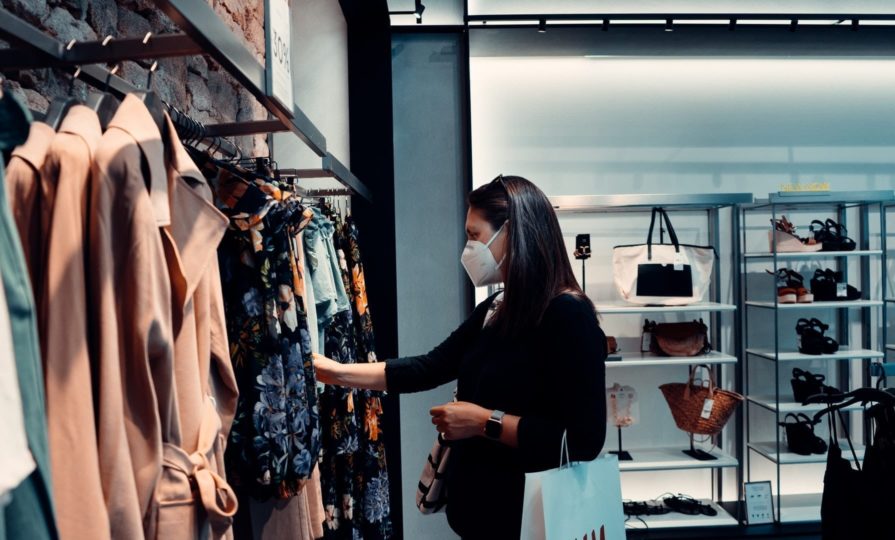
The story of retail in 2020 is one of extreme contrasts. On the one hand, the Amazons, Asos and supermarket operators of the world have all enjoyed tremendous success; on the other, almost every other segment of the industry has been decimated. More than 11,000 chain outlets shut in the first half of the year, twice as many as the same period in 2019.
Is it going to get any easier? With new restrictions in England running through to April 2021, and similar conditions in Scotland, Wales and Northern Ireland, the UK high street could look very different by the middle of next year.
Then there’s the issue of changing consumer behaviour and attitudes. According to a McKinsey study, 63% of UK consumers have tried new shopping behaviours since the pandemic started. What’s more, up to 88% of them intend to continue that adopted behaviour.
This isn’t just a vision of the future either; the report goes on to suggest that the peak Christmas season is likely to see markedly different behaviours and shifting loyalties than in previous years. Those retailers hoping for a holiday bump after second lockdown could find themselves in real trouble.
While a switch to e-commerce and more digital forms of shopping is the dominant behaviour change, retailers also need to be aware of a more sustainable approach to consumption. Another McKinsey report said that two-thirds of surveyed consumers state that, since the start of the pandemic, “it has become even more important to limit impacts on climate change,” while a similar number are now “going out of their way to recycle and purchase products in environmentally friendly packaging”. Being more conscious of impact is set to have a significant ongoing influence on buying decisions.
Three challenges, one theme
Three very different challenges, all with a common theme – that they are trends that have been accelerated by the pandemic.
And that’s the key word – accelerated. Not started, because these are trends that were gathering pace before anyone outside of a small selection of specialists had even heard of the coronavirus. As many have noted, we have seen years of progress in the space of just a few months.
However, that may be of little comfort to those retailers that have been caught out by the relentless nature of the last year. So, what do they need to be doing to combat these challenges and come out of the other side?
Retail in 2021
Or, to look at it another way, what is the ideal set up for a retail organisation in 2021?
For those that aren’t pure e-commerce, finding a way of maximising the return of their bricks and mortar operations is going to be critical. That might seem like a mammoth task at a point in time when local restrictions could change at any moment; when the definition for essential and non-essential goods can change overnight, with a decision taken years before not to stock food having significant ramifications today. However, what it also points to is having an agile organisation that can quickly turn channels, such as bricks and mortar, on and off, converting them to alternative uses (such as local distribution centres), as restrictions change.
So, for instance, should a localised lockdown hit one part of the country, physical stores could become distribution and click and collect points to support an ecommerce operation. Once the lockdown is lifted, the shop can reopen. It’s a strategy being adopted by a number of high street brands, currently, and it will be interesting to see how it contributes to their results in the coming weeks and months.
This links to responding to changing consumer behaviour. The mechanisms required to become more agile can also be used to tailor services and channels to meet the new needs of customers. For example, sustained increase in mobile shoppers requires not only the technological infrastructure to provide the right platform, but the operational agility to be able to respond appropriately.
Then there’s the issue of becoming more sustainable. This is very much a long term shift, and one that not only demands more energy efficient and so-called green ways of working (running the gamut of energy-saving bulbs in offices and stores, through to lower carbon footprint logistics and warehousing), but a fundamental rethink of business models. If part of your supply chain has relied upon cheap, fast labour on the other side of the world, and you want to appeal to a more socially conscious consumer, you are going to need a lot more than electric trucks covering last mile delivery.
This is where conversations quickly shift towards the concept of the circular economy, something that the likes of IKEA, with its buy-back initiative, H&M, Nike and other leading retailers are embracing. This is more than sustainability, of course – it is a root and branch overhaul of every part of a retailer’s business, from sourcing to sale, with the added complexity of getting end-of-life products back again so that they can be reused.
Three challenges, one solution
These might seem like markedly different concepts, but again, there is a consistency running through all these solutions. They all require the ability to build effective, realistic and accurate scenario plans, ones that allow retailers to not just adapt to, but successfully manage, the constant cycle of change.
It requires the use of data and analytics to build models which provide possible actions in the event of a major event, whether it’s another lockdown or a spike in customers using one channel over another. In the case of moving towards a circular economy model, its being able to plan when products are going to need replacing and connect customers with an efficient returns process.
It’s something many retailers will currently struggle with – according to a recent study Board conducted, 54% of retailers still use spreadsheets to aid decision-making. In a world of continual disruption, this isn’t enough – they need dynamic, intelligent scenario planning platforms that uses data-driven insights to show retailers what’s coming, and how they need to react.
The key to successfully managing ongoing disruption
No one knows what will come next. For retailers used to forecasting months in advance, it’s a frightening time, with no guarantee that what used to be the high points of the year will deliver what they need. To combat the continual battering they are receiving, they need to start thinking how they can become more agile and react appropriately to different situations. Key to this is the ability to plan effectively and model accurate scenarios that give them the ability to respond effectively. Using readily available data and harnessing the latest technology, scenario planning is a critical asset as retailers seek to cope with whatever comes next.
Judith McCandless, head of retail at Board International
Judith works with global retailers to ensure that they have the right technology solution to meet their business needs, and has been working in the retail industry for over 25 years as a merchandiser, a software implementer and in the last 10 years helping retailers understand how systems can resolve industry issues and deliver a return on investment.







